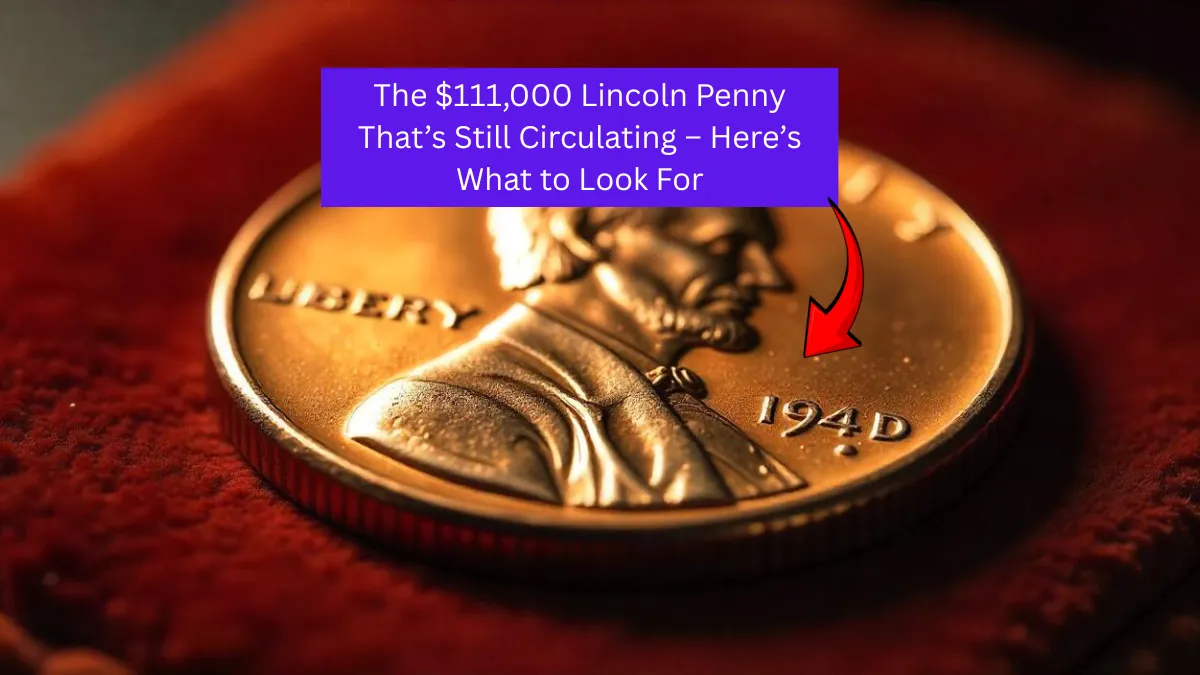What if I told you your spare change might be hiding a small fortune? Meet the rare Lincoln penny worth up to $111,000, the numismatic equivalent of treasure buried in your pocket. With millions of these pennies still circulating, uncovering one could mean a game-changing windfall. Let’s dive into what makes this cent so special—and exactly how to spot it.
What Makes It Worth $111,000?
Recent reports have spotlighted an extremely rare 1943 bronze Lincoln wheat penny struck at the Denver Mint. During World War II, pennies were made on zinc-coated steel planchets to conserve copper. However, a very small number of copper planchets were accidentally used instead. The result: bronze pennies from 1943, contrary to standard mint procedures.
These anomalies are not just collector novelties—they’re treasure. Auction houses have recorded sales nearing $336,000, and high-grade versions regularly fetch over $100,000.
Why These Coins Still Circulate Today
Only an estimated 20–40 specimens of 1943 bronze pennies exist—some from the Philadelphia, Denver, and San Francisco Mints. A few have slipped into circulation, and while most have been snagged, some may still be overlooked in rolls, coin jars, or registers.
How to Spot a 1943 Bronze Penny
Here’s how to identify one:
- Check the Date & Mint Mark
You should see “1943” on the obverse, with the mint mark (“D” or “S”) underneath the date. The rare bronze versions have the correct year but the wrong metal. - Test with a Magnet
Steel pennies are magnetic; bronze isn’t. If your penny doesn’t stick to a magnet, it’s likely bronze—a big red flag here. - Weigh the Penny
A bronze penny weighs around 3.11 grams, while steel versions are lighter (~2.7 grams). - Inspect for Wear & Condition
High-grade coins (AU50–MS65+) command the highest prices. Even moderately worn bronze pennies can draw six-figure bids. - Look for Die Characteristics
Compare features like coin edge, wheat stalk clarity, and Lincoln’s portrait to certified specimens.
Hidden Value Beyond 1943 Bronze
While the 1943 bronze penny steals the spotlight, other rare pennies still circulate:
- 1909‑S VDB – Extremely scarce with ~484,000 minted; top-end specimens sell for ~$50,000–$150,000.
- 1955 Doubled‑Die Obverse – Dramatic doubling; examples can reach $100,000+.
- 1914‑D – Low mintage and in-demand; fine examples have sold north of $150,000.
Auction Highlights
- A 1943 bronze penny (Denver mint) sold for $336,000 at Heritage.
- A 1943 bronze penny (Philadelphia) previously reached $240,000 in an AU50 grade.
- Other premium wheat pennies—like the 1914‑D and 1909‑S VDB—have made six‑figure sales in recent years.
What to Do if You Discover One
If you suspect your penny is valuable:
- Don’t clean or scratch it—preserve its condition.
- Store it safely in a coin holder to prevent damage.
- Get it appraised by a reputable coin dealer or numismatist.
- Consider grading by a respected service like PCGS or NGC to certify its rarity and condition.
- Insure it if highly valuable.
Why These Pennies Still Turn Up
Despite their legendary status, some rare wheat cents still float through everyday circulation because:
- Many people don’t check pennies closely.
- Banks and cashiers often overlook oddities when sorting.
- Found coins may stay unnoticed in collections or jars for years.
If you’re thorough—magnet-testing and briefly inspecting pennies—you increase your chances of finding a rare gem.
Broader Implications & History
The story of wartime penny production changes is more than a quirk—it reflects economic shifts, technological constraints, and minting protocols during scarcity. For coin collectors, such anomalies offer a window into history.
As enthusiast Eric Miller notes, any non-magnetic 1943 penny demands closer inspection—and could mean a huge payday.
Final Take
Here’s your pocket-change checklist:
- Check every 1943 penny—especially any with a “D” or “S” mint mark.
- Magnet test: non-magnetic = bronze.
- Weigh it: around 3.11g signals copper bronze.
- Condition matters: better state = richer returns.
It might feel unlikely—but one lucky find could turn your mere cent into a six-digit surprise. So next time you receive change, pause. That unassuming penny might just be your ticket to a life-changing find.
Curious to explore other rare coin hunts or need help identifying a penny you found? I’d be happy to guide you further!
